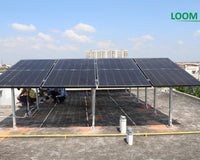The Ministry of New & Renewable Energy (MNRE) has come up with a number of reforms in its ALMM mechanism for Solar Photovoltaic Modules. The reforms are primarily aimed at reducing cost to solar PV manufactures, time between application to enlistment as well as compliance burden and increasing ease of doing business in the whole ALMM process.
Major Reforms in the ALMM List
The major reforms include:
(a). Reduction in application fee by 80%.
(b). Substantial reduction in inspection fee, with reduction in certain cases being as high as 70%.
(c). Exemption from factory inspection in case of enlistment of additional models in ALMM which are similar to those already enlisted by the applicant, but having lower wattage.
(d). Allowing the manufacturers to withdraw their applications prior to factory inspection, with refund of 90% of application fee.
(e). Increase in ALMM enlistment validity from 2 years to 4 years.
(f). Grant of provisional enlistment in ALMM within 7 days of receipt of BIS registration and time-limit of two months for factory enlistment and final enlistment, failing which deemed enlistment.
(g). All future ALMM application to be accompanied by scanned copy of applications and processing of ALMM applications will start without waiting for the submission of hard copies, which can be submitted subsequently.
(h). Introduction of following end-use category-wise minimum module efficiency thresholds for enlistment in ALMM:
- Utility/ Grid Scale Power Plants: 20.00%
- Rooftop and Solar Pumping: 19.50%
- Solar Lighting: 19.00%

Commenting on the changes, Shri B. S. Bhalla, Secretary, MNRE said that the changes in the ALMM for Photovoltaic Modules, would enhance the ease of doing business and help in ramping up the domestic production of solar photovoltaic modules for catering to the current and the future demand. "The PLI Scheme has resulted in not only boosting the domestic manufacturing capacity of solar modules but also vertical integration of the value chain in India. We have already declared the bid trajectory of inviting bids of 50 GW renewables each year for the next 5 years. This includesope of Solar energy capacity. The bid trajectory is aimed at providing a fillip to the RE manufacturing industry in the country by indicating the demand that would be created. The easing of the ALMM charges and regulations is a step in the direction of enhancing the Ease of Doing Business, lessening the compliance burden and reducing the charges incurred in various processes of listing under ALMM,” Shri Bhalla said.
Background of ALMM
(1). Since solar PV power installations are set up for a period of 25 years and solar PV cells and modules used in plants require long term warranty, it is desirable to ensure that such products are indeed made in units in which production has been claimed. It is possible that some units may claim production of solar cells & modules produced or made elsewhere. The reliability of producer is essential to protect the consumer interests and ensure larger energy security of the Country.
(2). Accordingly, the Ministry of New and Renewable Energy (MNRE) issued “Approved Models and Manufacturers of Solar Photovoltaic Modules (Requirement for Compulsory Registration) Order, 2019” on 02.01.2019.
(3). The ALMM Order states that ALMM shall consist of LIST-I, specifying models and manufacturers of Solar PV Modules and LIST-II, specifying models and manufacturers of Solar PV Cells. First ALMM List for solar PV modules was issued on 10.03.2021. ALMM List for solar PV cells has not yet been issued.
(4). Only the models and manufacturers included in ALMM List-I (of solar PV modules) are eligible for use in Government Projects/ Government assisted Projects/ Projects under Government Schemes & Programmes/ Open Access / Net-Metering Projects, installed in the country, including Projects set up for sale of electricity to Government under the Guidelines issued by Central Government under section 63 of Electricity Act, 2003 and amendment thereof. The word “Government” includes Central Government, State Governments, Central Public Sector Enterprises, State Public Sector Enterprises and, Central and State Organizations / Autonomous bodies.
(5). However, from 10.03.2023, the ALMM order has been kept in abeyance for one financial year, i.e. FY 2023-24. Thus, projects commissioned by 31.03.2024 will be exempted from the requirement of procuring solar PV modules from ALMM.
(6). As on date, ALMM List consists of 91 no of module manufacturing facilities (all domestic) with their aggregate solar PV module manufacturing capacity of 22,389 MW per year.
Source: PIB, Download in PDF













1 comment
sudhir vishnoi
please share the Quotations of 590watt power solar pannel Approved ALMM certified